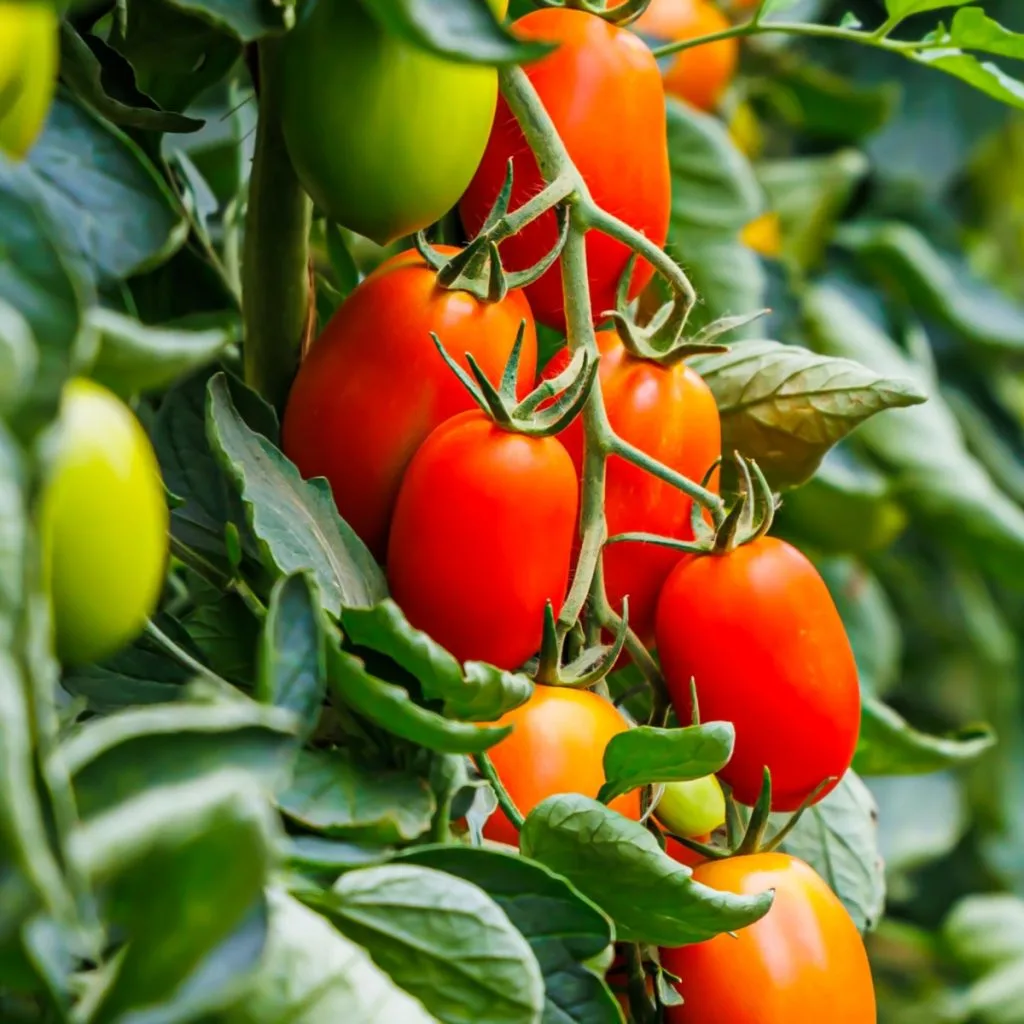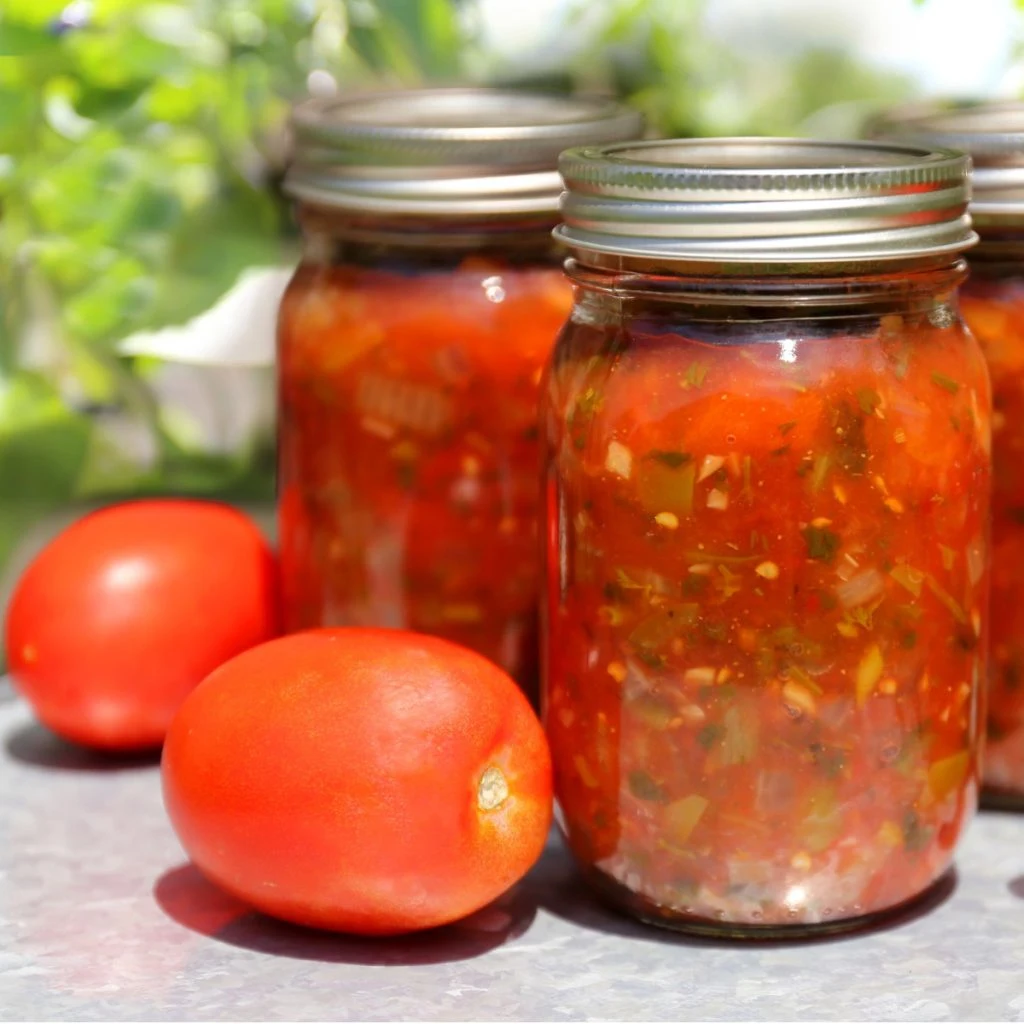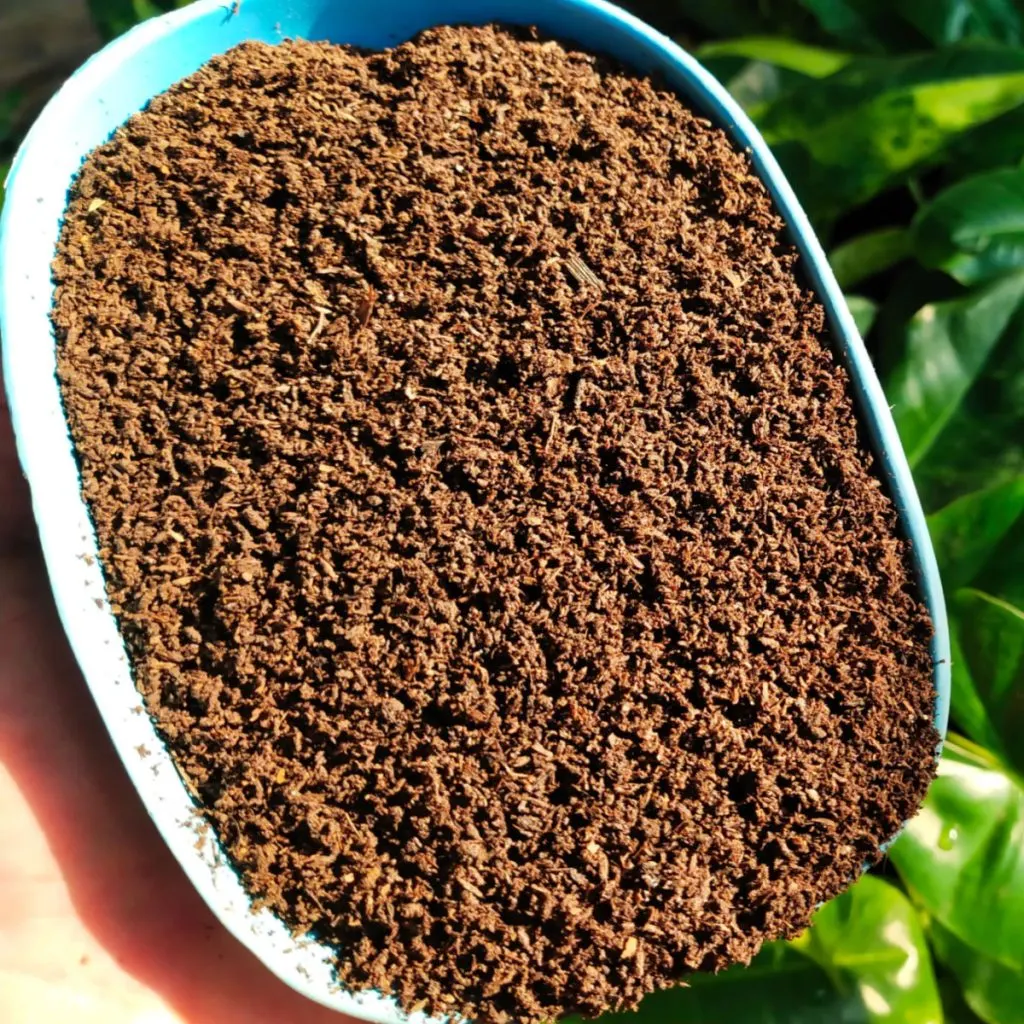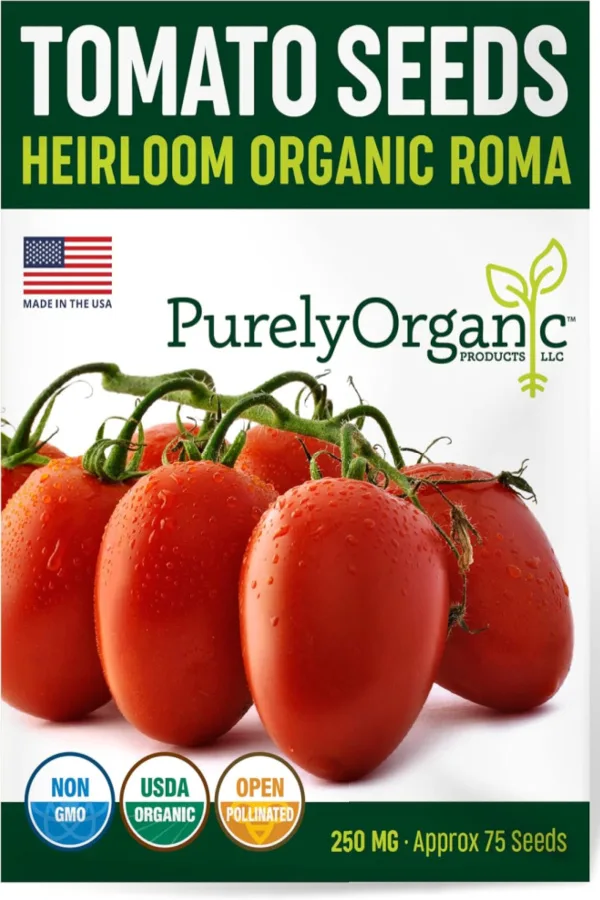Looking for a few simple secrets when it comes to growing Roma tomatoes in your garden, raised beds or containers this year?
When it comes to versatile, productive, and flavor packed tomatoes, few varieties can match a Roma tomato. The tomato is loved for its dense, meaty flesh – and it’s lower low moisture content. In fact, because of that, the Roma is great for making great sauces, salsas, and canning.
But to grow Roma tomatoes successfully and have a big harvest, there are a few key secrets that can make a big difference. For one, it’s understanding that as a determinate tomato, they have a unique growth habit. And also – as a big nutrient needing plant, you need to plant them with – and continue to give them – plenty of power.

A Few Simple Secrets To Know About Growing Roma Tomatoes
Roma tomatoes are classified as determinate tomatoes – and that is important for gardeners to know up front. A determinate tomato will grow to a certain height, and then set fruit all at once. Usually, this will occur over a two to three-week period. But then the tomato plant will stop producing for good – and die off.
This fact often makes gardeners worry their Roma tomato plant isn’t getting enough water or is sick. In reality, as a determinate, it has simply grown to full potential. This actually makes the plant ideal for making large batches of sauce or salsa all at once, or for preserving through canning or freezing.
With that in mind – if you want more Roma tomatoes all season long, stagger your planting in late spring to every two to three weeks over an eight to ten week period. And with that, you will have fresh Roma’s all season long!
Planting For Success
Start With Transplants, Not Seeds In The Ground
When growing Roma tomatoes, it’s always best to start from transplants. Either ones you purchase – or from plants you start from seed indoors. Why? Because this variety can take a long time to go from seed to harvest, and transplants will give them a big head start. Affiliate Seed Link: Organic Tomato Seeds (Roma)
As with all tomato plants, wait until the danger of frost has passed and the soil has warmed before planting. It’s best to have the soil temperature be at least 60°(F) before planting. If you can wait until 65° or higher – even better!
Warm soil helps a tomato plant’s roots develop more quickly. It also prevent the plant from suffering too much from transplant shock.
Plant Deep for Strong Roots
How you plant is just as important as when you plant when growing Roma tomatoes. Tomatoes can form roots all along their stems. To take advantage of this, plant your Roma tomatoes deep. Bury at least two-thirds of the stem, removing the lower leaves before planting.
This will create a deep and robust root system, which leads to stronger plants and better fruiting. For more on this, see our article: How Deep To Plant Tomatoes – And Why It’s So Important!
As a heavy feeder, it’s also very critical to feed them well from the very beginning. For starters, that begins by filling each planting hole with a powerful mix of organic ingredients – and it all starts with compost.

Compost offers a steady, slow-release source of essential nutrients that plants need to thrive. Beyond just feeding tomato plants, compost also plays a critical role in improving soil texture, making heavy soils lighter and helping sandy soils retain moisture and nutrients more effectively.
Don’t Forget Worm Castings, Egg Shells & Coffee Grounds When Growing Roma Tomatoes!
Worm castings, often considered a gold standard in natural fertilizers, contribute significantly to soil health for tomato plants. Worm castings also support robust root development, helping plants establish themselves more quickly and grow stronger faster.
Pulverized eggshells also serve as an excellent source of calcium for the garden. This is particularly important for fruiting vegetables like tomatoes and peppers, which are prone to blossom end rot, a condition caused by calcium deficiency.
By incorporating eggshell powder into the soil around the roots, you give plants a steady calcium supply to prevent the issue. The key here is to grind the shells into a powder to work fast. Last but not least, coffee grounds are great in tomato planting holes too. They add valuable nitrogen and help loosen the soil.

So how much of each? In each planting hole, put two to three cups of compost, a cup of worm castings – and a few tablespoons each of coffee grounds and egg shell powder. Mix these into the soil at the bottom of the hole while planting. After planting, water deeply and mulch well to retain moisture and suppress weeds. Affiliate Link: 100% Worm Castings
Giving Your Roma Tomatoes What They Need
Even though Roma plants are more compact than indeterminate types, they still benefit greatly from support. When growing Roma tomatoes, use a sturdy tomato cage or stake to keep plants upright. Be sure to install supports at planting time to avoid damaging the roots later.
Roma tomatoes need full sun to perform at their best. That means planting them where they can get at least 6–8 hours of direct sunlight daily. More sun equals more energy for fruit production.
As for watering, keep the soil consistently moist down deep but not saturated, especially during flowering and fruit development. Always water at the base of the plant to avoid getting the leaves wet. This can lead to mildew and other issues for your plants. Last but not least, mulch your plants with at least four inches of straw, shredded leaves, or grass clippings to help retain soil moisture and keep weeds down.
While Roma tomatoes don’t require heavy pruning like indeterminate types, a little maintenance goes a long way.
Remove the lower leaves (the bottom 6 inches) as the plant grows to improve airflow and reduce disease risk. It’s also best to pinch suckers from the lower half of the plant if they appear, so energy goes toward fruit production.
Harvesting
Most Roma tomato varieties take about 70–80 days from transplant to harvest. Once they start ripening, the fruit will come fast over a short window. Once harvested, Romas store well on the counter for several days and hold their flavor beautifully when preserved. If you are looking for delicious recipes to use up your Roma tomatoes, here are some to choose from: Chunky Salsa Recipe For Canning, Tomato Bruschetta Recipe – Easy Appetizer Recipe and, Tomato Bacon Jam Recipe!
Here is to growing Roma tomatoes in your garden this year – and to having a big harvest too! If you are looking for the perfect low-acid tomatoes to grow this year, be sure to check out: The Best Low Acid Tomatoes To Grow In Your Garden!
I Grow Tomatoes
Follow Our Facebook Page For Even More Great Tomato Growing Tips! I Grow Tomatoes Facebook Page
I Grow Tomatoes is a website created for those who love all things about tomatoes – from planting and growing – to cooking and canning! We publish two articles every week, 52 weeks a year. Sign up today to follow via email! This article may contain affiliate links.

